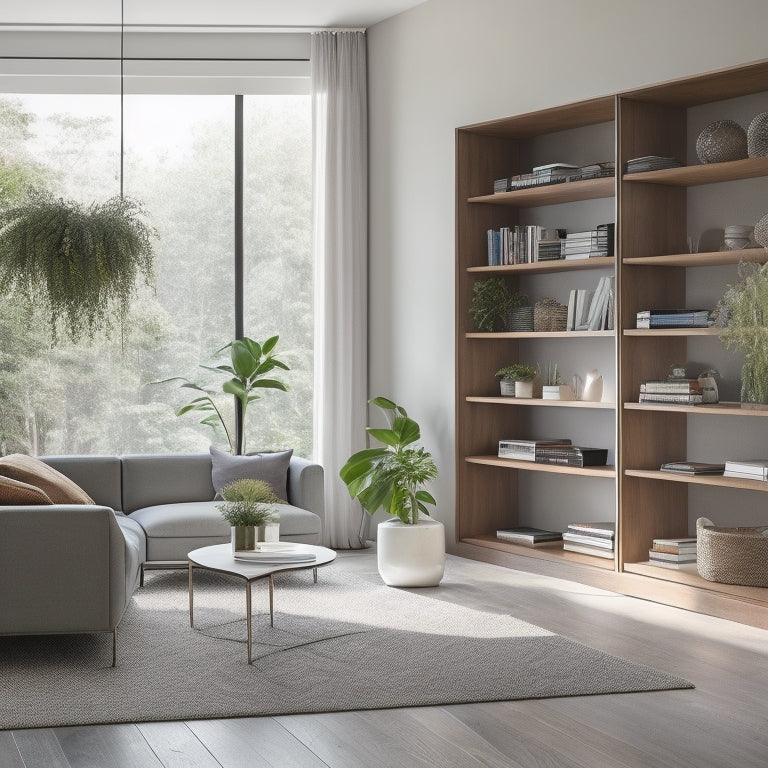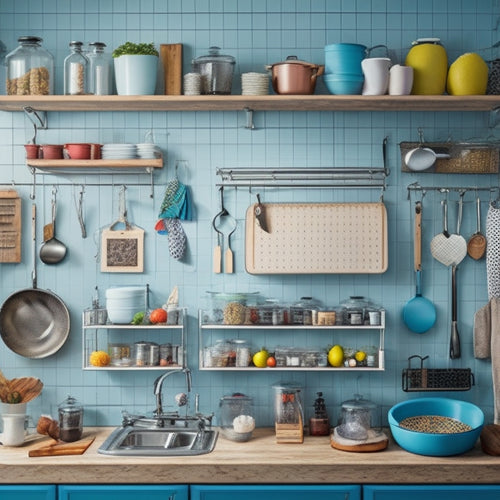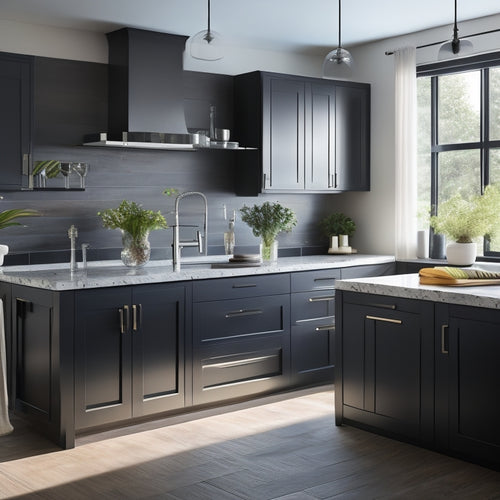
Maximize Space With Creative Storage Solutions
Share
We've mastered the art of maximizing space with creative storage solutions! We utilize under-bed storage for cans and bottles, raise beds for extra space, and create secret compartments. In our pantries and closets, we hack shelves to fit more, store canned goods under the sink, and repurpose furniture for storage. We repurpose unused spaces like bedrooms, coat closets, and under-stair nooks for food storage. By stacking cans, using rolling totes, and experimenting with unconventional techniques, we squeeze every inch of space. Now, we're ready to take our storage to the next level – and we're excited to explore even more innovative solutions ahead.
Key Takeaways
• Utilize hidden spaces like under-bed storage, secret compartments, and false bottoms for discreet food supply storage.
• Repurpose furniture, such as cubes with hinged lids, and canvas organizers to create multi-functional storage solutions.
• Maximize pantry and closet space with shelves, door shelves, and short bookshelves to optimize food storage.
• Experiment with unconventional storage techniques, like stacking canned goods under beds or in crawl spaces, to fit more items.
• Implement space-saving techniques, such as propping up beds on blocks and using rolling totes, to create more storage capacity.
Hidden Storage Opportunities
We can uncover hidden storage opportunities in our homes by thinking creatively about the spaces we already have, such as under our beds and inside our furniture. By doing so, we can create secret compartments and undercover storage solutions that keep our essential items safe and out of sight.
For instance, we can utilize under-bed storage for cans, wheat boxes, and water bottles, or consider raising our beds for additional storage space. We can also make cubes with hinged lids for seating and food storage, or hide cans behind furniture like futons or wicker chests.
Pantry and Closet Hacks
By reimagining the layout and functionality of our pantries and closets, we can access valuable storage space and streamline our food storage systems.
We can maximize our pantry shelves by using pantry door shelves for spices and syrups, and storing canned goods under the kitchen sink for organization.
In our closets, we can create a closet organization system by converting them into food storage rooms with shelves or using short bookshelves for food storage.
We can also repurpose canvas organizers in closets for pantry items.
By implementing these hacks, we can optimize our kitchen storage and create a more efficient and accessible food storage system.
With these creative solutions, we can make sure our food supply is safe and easily accessible.
Repurposing Unused Spaces
As we've optimized our pantry and closet spaces, it's time to think outside the box and explore other areas of our homes where we can stash our food supplies.
We can repurpose unused rooms, like converting a bedroom or coat closet into a food storage space. We can also create secret compartments in unexpected nooks, such as under-stair spaces or laundry/utility rooms.
By doing so, we can store bulk items, like canned goods or water bottles, in a safe and accessible way. Additionally, we can utilize false bottoms in closets or hidden shelves behind furniture to store food supplies discreetly.
Innovative Storage Solutions
Beyond traditional storage methods, we're turning to clever hacks and DIY projects to stash our food supplies. For example, stacking canned goods under beds or in crawl spaces has become a popular choice. We are also finding creative ways to repurpose furniture. Turning cubes with hinged lids into seating and food storage is a smart solution.
Under-bed storage ideas are also a game-changer for many. They allow us to store cans, wheat boxes, and water bottles out of sight, maximizing space. Additionally, experimenting with unconventional pantry organization has proven to be effective. Techniques such as hiding cans behind furniture or using rolling totes and buckets for discreet storage under furniture are gaining popularity.
Optimizing Storage and Rotation
We regularly assess our storage spaces to guarantee that our food supplies are organized, easily accessible, and rotated regularly to maintain their freshness and nutritional value.
To optimize storage, we use space-saving techniques like propping up beds on blocks to fit food underneath and building roller shelving to fit behind standard shelving.
We also implement long-term storage strategies, such as storing non-perishable items in labeled boxes and crates, and building up our food supply for 3, 6, and 12 months.
For inventory management, we keep a detailed record of our stock, marking usage for rotation every quarter. By doing so, we make sure that our food supplies remain fresh and nutritious, providing us with peace of mind and a sense of security.
Frequently Asked Questions
Can I Store Food Storage Containers in a Damp Basement or Garage?
We avoid storing food containers in damp basements or garages, as moisture can compromise food safety; instead, we prioritize humidity control and dry environments to guarantee our supplies remain secure and edible.
How Often Should I Inspect Canned Goods for Spoilage and Rust?
We inspect our canned goods every 3-6 months for signs of spoilage, rust, or swelling, ensuring we rotate stock and consume oldest items first to prevent expiration and maintain a safe, reliable food supply.
Are There Any Specific Storage Solutions for Oversized or Bulky Items?
We incorporate industrial shelving and ceiling racks to store oversized or bulky items, ensuring accessibility and visibility while maintaining a safe and organized space, allowing us to efficiently utilize our storage capacity.
Can I Use Plastic Bins With Lids for Long-Term Food Storage?
"Are we prepared to weather the storm? We use plastic bins with lids for long-term food storage, ensuring label organization and easy bin accessibility, so we can grab what we need in a snap, staying safe and secure."
Are There Any Storage Solutions for Refrigerated or Frozen Foods?
We opt for specialized Frozen Food Organizers and Refrigerator Shelves to keep our perishable items safe and accessible, ensuring efficient rotation and minimizing spoilage, while maintaining a clean and organized kitchen.
Related Posts
-

Why Cluttered Kitchens Need Better Tool Storage
You're likely wasting around 30 minutes a day searching for misplaced kitchen tools or utensils, which is equivalent ...
-

Revolutionize Your Kitchen With Sink Upgrades
Revamp your kitchen by enhancing your sink with thoughtfully chosen accessories, transforming it into a multitasking ...
-

Data Lakes and Warehouses: Unveiling Data Wisdom
Data lakes and warehouses are two distinct data storage solutions that serve different purposes. Data lakes store mas...


